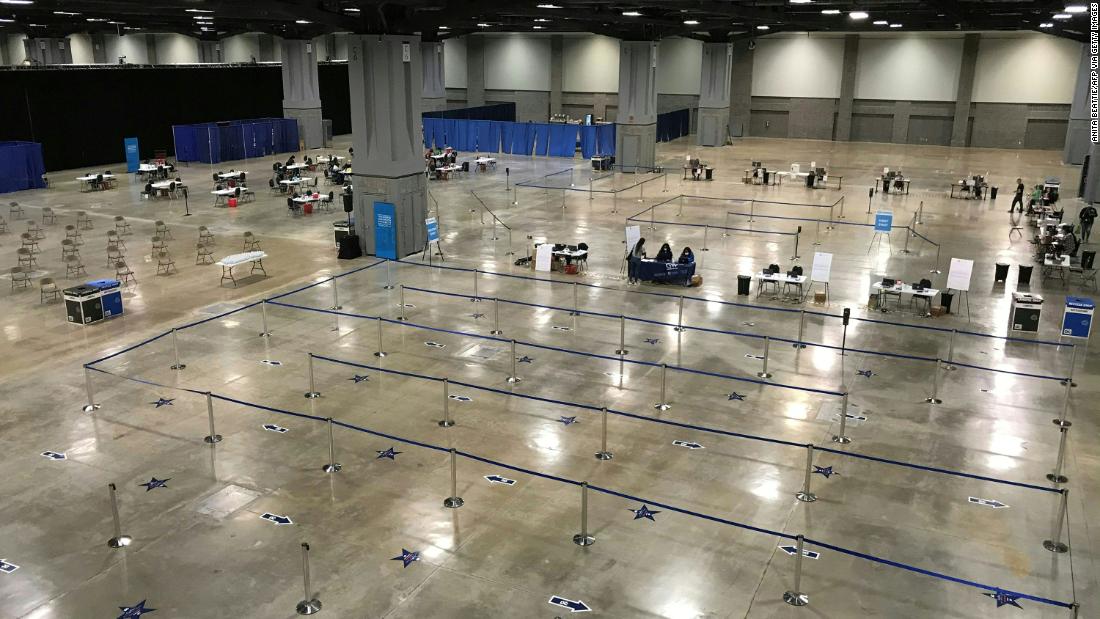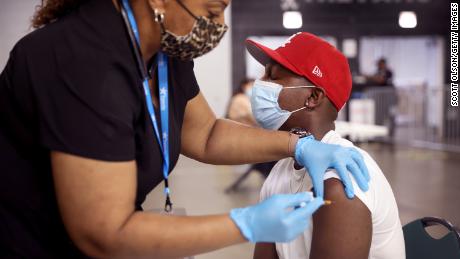What the Delta variant could mean for Covid in the US
And it may already account for 1 in every 5 infections nationwide, experts say.
The Delta variant, as it’s now called, has swept across the UK, all but replacing the Alpha variant first identified there late last year.
“This is the most transmissible of all the variants that we’ve seen,” Dr. Peter Hotez, dean of the National School of Tropical Medicine at Baylor College of Medicine, told CNN’s Ana Cabrera Monday.
“We saw what happened in the UK, where it overtook the entire nation. So I’m worried that’s going to happen in the US,” he said.
Dr. Rochelle Walensky, director of the US Centers for Disease Control and Prevention, told CNN last week she anticipates Delta will become “the predominant variant in the months ahead.”
And that could be a few weeks — not months — away, according to William Lee, vice president of science at Helix, a company whose Covid-19 tests have helped track a number of variants.
In the two weeks leading up to June 5, CDC estimates that Delta was responsible for nearly 10% of US infections. And now, both Hotez and Lee say it likely accounts for roughly a fifth of cases.
“It’s so transmissible that, unless your vaccination rates are high enough, you will still have outbreaks,” said Lee.
A more transmissible variant like Delta also raises the bar for what percent of a population has to be vaccinated “to reach this mythical herd immunity,” he explained.
“More worrisome is that we know that there are pockets of unvaccinated people,” he added. “And so I would be worried about Delta spreading very quickly in those pockets.”
Predicting the future
Infectious disease modelers are showing how a variant like Delta could make a Covid-19 comeback later this year.
Faced with a more transmissible variant, “it looks like we do see a resurgence late in the summer, or in the early fall,” said Justin Lessler, an epidemiologist with the Johns Hopkins Bloomberg School of Public Health.
The most recent model finds that a Delta-like variant that’s assumed to be 60% more transmissible than Alpha, coupled with 75% of eligible Americans getting vaccinated, can result in Covid-19 bouncing back from summer lows to cause more than 3,000 deaths per week at various points during the fall and winter — coinciding with children returning to school and weather that pushes people back indoors.
That’s about 1,000 more Covid-19 deaths than the US has seen over the past week, though still far below the peak of 24,000 deaths during the second week of January.
But according to the model, getting 86% of eligible Americans vaccinated — meaning, those 12 and up — could avert more than 10,000 cumulative deaths by late November.
Currently, 62.5% of Americans 12 and up have gotten at least one dose of a vaccine, according to CDC. At the current pace, the country would hit 75% in September and 86% in November. However, the pace of vaccination has slowed in recent weeks.
Lessler said that Covid-19 resurgences wouldn’t be experienced uniformly all over the country: “It’s the states that have lower vaccination rates, and a lower projected vaccination rate, that are really driving those resurgences.”
Research on Delta in the UK has shown high levels of protection from two doses of the vaccines used there, with effectiveness against hospitalization exceeding 90% for both Delta and Alpha, according to Public Health England.
Dr. David Rubin, director of PolicyLab at Children’s Hospital of Philadelphia, has also seen trends of increasing cases, hospitalizations and deaths in areas of lower vaccination.
Rubin said his team is increasingly focused on hospitalizations and emergency room data to see how the pandemic plays out because, as fewer people get tested, the number of cases is becoming a less reliable marker.
In areas with lower vaccination rates, they noted a slower rate of decline in hospitalizations. Rubin pointed to the state of New York, where about 52% of the population is fully vaccinated, and where the rate of new hospital admissions has been steadily declining. Meanwhile, in a state like Missouri, where just 38% are fully vaccinated, the hospitalization rate is not only higher but has shown an increasing trend since mid-May, according to CDC data.
While it may feel like the country has turned a corner, Rubin warned “the pandemic hasn’t ended.”
Delta’s trajectory in the US
While experts agree that Delta poses a greater threat to unvaccinated populations, it’s not a foregone conclusion it will follow the exact same trajectory in the US as it did in the UK, Helix’s Lee said.
In the US, Covid-19 cases caused by the Alpha variant (also known as B.1.1.7) grew to 70% in April but plateaued there — at a much lower level than it did in the UK.
It’s hard to know exactly why, Lee said. It may have something to do with the diverse set of policies that could impact the spread of the virus — including public health measures and the vaccine rollout in the US.
“We think it’ll be different primarily because of the presence of Gamma in the US that never really gained a foothold in the UK,” Lee said.
As of early- to mid-June, both Delta and Gamma appear to account for similar proportions of cases in the US. But Delta appears to be spreading up to several times faster.
And while Gamma doesn’t appear quite as transmissible, it does concern scientists for another reason: It appears less easy to neutralize with antibodies — including those from people who have been vaccinated, those who have been previously infected, and certain monoclonal antibodies, as well.
“It’s not the doomsday scenario where they don’t work at all, but there may be some reduced efficacy,” Lee explained.
And this may partly explain why Delta and Gamma appear not to spread in quite the same way in different parts of the country.
Lee’s preprint showed that Delta appears to be “growing faster in counties with a lower vaccination rate,” using a cutoff of 28.5% fully vaccinated on May 1.
Meanwhile, Gamma appears to have spread more among counties with higher vaccination rates, versus those below that cutoff.
While the research draws from the strength of Helix’s county-level testing data in many states, Lee says the study’s findings may not be representative of the country as a whole.
But the message they carry is perhaps more universal:
Given the lifting of restrictions across the US, “At the end of the day, being vaccinated is still the best — and potentially, at this point, the only — tool we have,” Lee said.
CNN’s Naomi Thomas, Jen Christensen and Virginia Langmaid contributed to this report.
![]()












